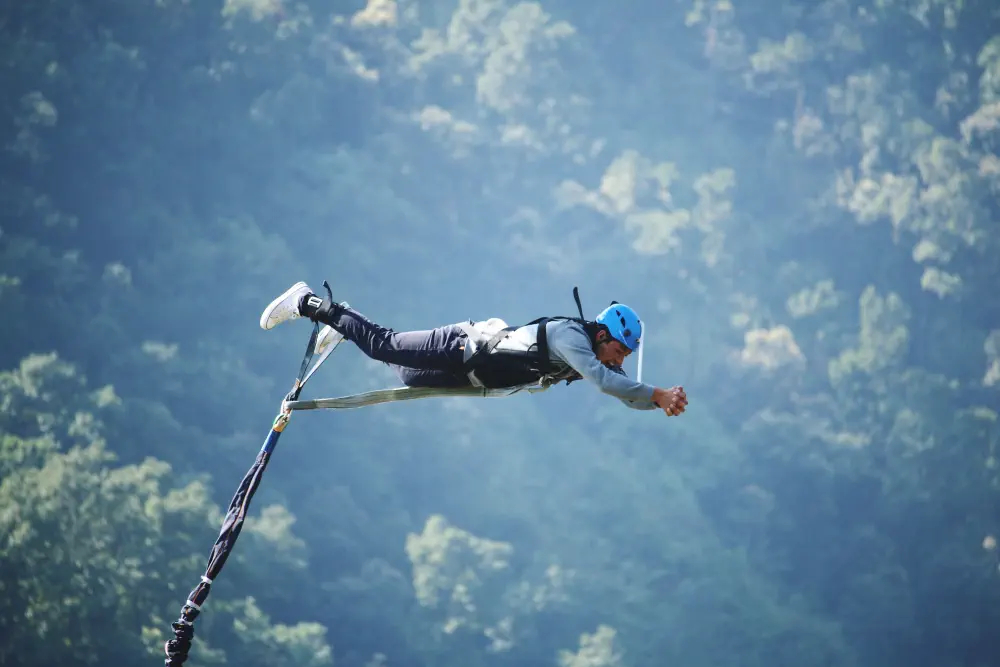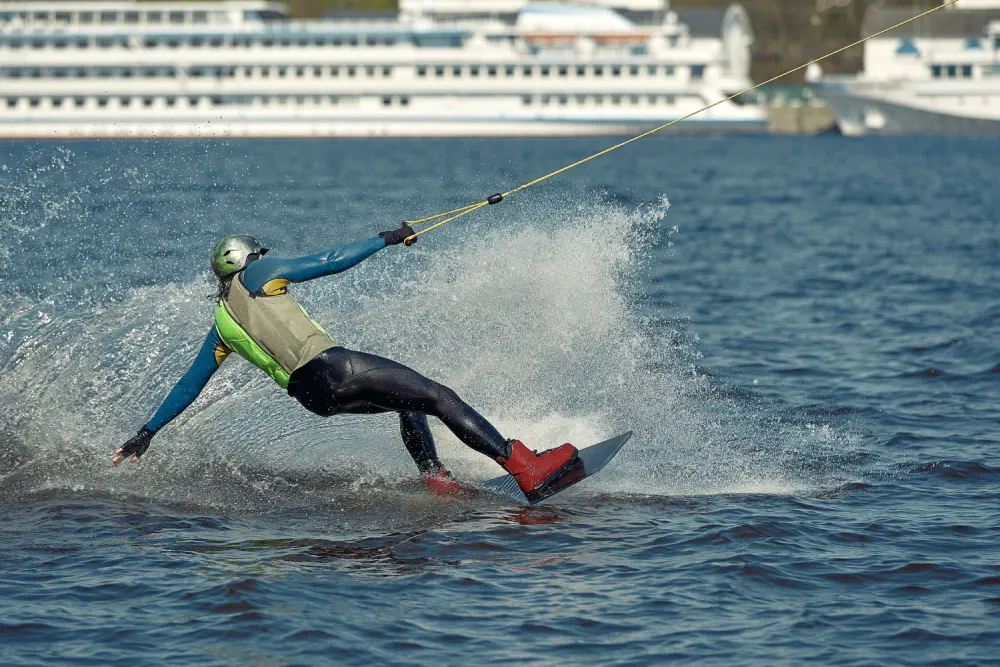We offer medical detox and multiple addiction treatment options in our
luxury treatment centres in Port Hope, Cobourg, and Ottawa.
Understanding Adrenaline Junkie Addiction
That rush hits hard – your heart pounds, everything sharpens, you feel completely alive. For many Canadians, though, occasional thrill-seeking turns into something much darker. The need for that next high starts making decisions for you. You start planning your whole week around the next thrill. Friends get cancelled for last-minute adventures. You brush off concerns about safety because the rush is worth it. When adrenaline junkie behaviour reaches this point, it's crossed into addiction. Recognizing this pattern helps show the real dangers of always chasing thrills.
Key Takeaways
- Brain Chemistry: Adrenaline releases dopamine in reward pathways, building cycles that work like substance dependencies.
- Common Causes: Mental health conditions like ADHD and trauma, genetic predisposition, family dynamics, and major life stressors often trigger addiction patterns.
- Recognition Signs: Compulsive risk-taking, withdrawal symptoms, and ignoring responsibilities mark problematic patterns.
- Health Risks: Constant cardiovascular strain, psychological distress, and damaged relationships come from always seeking stimulation.
- Support Pathways: CBT, mindfulness training, and peer support programs provide proven recovery methods.
What Does "Adrenaline Junkie" Really Mean?
The adrenaline junkie meaning points to someone who can't stop seeking activities that flood their system with epinephrine. The term came from the 1990s extreme sports culture, originally celebrating bold adventurers. Science shows us something more complicated.
When your body senses danger or excitement, adrenal glands pump epinephrine – what most people call adrenaline – straight into your bloodstream. This hormone speeds up your heart, sharpens your focus, and sends oxygen-rich blood rushing to your muscles. The feeling is euphoric, powerful, and intensely satisfying.
Most people enjoy thrills sometimes, roller coasters, scary movies, and competitive sports. These give healthy excitement without messing up daily life. Adrenaline junkies develop different patterns where this rush becomes necessary just to feel normal. The split comes down to control and balance. Healthy thrill-seekers enjoy excitement within reasonable limits. People with problematic patterns can't resist chances for stimulation, even when their brain tells them otherwise. They start drama, pick fights, or engage in dangerous activities just to get that familiar chemical surge.

The Science Behind Adrenaline Addiction
Adrenaline addiction makes sense when you look at how the brain handles repeated stimulation. Epinephrine doesn't just affect your body – it changes neural reward circuits in big ways.
Adrenaline flooding your system activates brain areas packed with dopamine receptors. Dopamine, sometimes called the "reward chemical," reinforces behaviours by making them feel good. Each adrenaline rush makes neural pathways stronger that connect risk-taking with satisfaction. Over time, this rewires the brain to want these experiences.
Tolerance builds up. Activities that once felt incredibly satisfying start feeling ordinary. Adrenaline addicts end up chasing bigger and bigger risks to get the same effect. Someone who used to get thrilled by driving fast might move to street racing, then to more and more dangerous stunts.
What Causes Adrenaline Addiction?

Junkie adrenaline patterns don't develop overnight. Multiple factors usually combine to create this type of addiction. Understanding these causes helps explain why some people get hooked while others enjoy thrills occasionally without problems.
Mental Health and Psychological Factors
Underlying conditions play a huge role. People with ADHD often struggle with chronic understimulation – their brains crave more input just to feel normal. Adrenaline addicts with ADHD might discover that extreme activities help them focus better than anything else.
Trauma survivors frequently use adrenaline as self-medication. The intense focus during dangerous activities can temporarily quiet intrusive thoughts. Anxiety and depression also create pathways to thrill-seeking as people escape feelings of emptiness or seek control when life feels chaotic.
Environmental and Genetic Influences
Family dynamics matter more than people realize. Growing up with high drama or conflict can wire your nervous system to expect intense stimulation. Normal environments might feel uncomfortable because they're unfamiliar.
Peer groups and social media amplify risk-taking behaviours. Social validation for risky behaviour reinforces the addiction cycle. Some people are also born with brains that need more stimulation – genetic variations in dopamine receptors affect how intensely people experience rewards.
Life Stress and Early Learning
Major life changes often trigger problematic thrill-seeking. Divorce, job loss, or other stressors can drive people toward extreme activities as coping mechanisms. Chronic stress creates constant arousal that some people become addicted to maintaining.
School environments sometimes accidentally create the first adrenaline-addicted patterns. Students who procrastinate discover that deadline pressure provides an exciting rush. When this gets rewarded with good grades, the pattern gets reinforced.
What Are the Signs of Adrenaline Dependency?
Spotting problematic patterns early stops things from getting dangerous. Several behavioural signs separate casual thrill-seekers from those developing adrenaline addiction.
Physical and Emotional Symptoms
Physical symptoms show up as restlessness during calm periods, trouble relaxing without outside stimulation, and headaches or irritability when routine activities take over. Adrenaline addicts often say they feel "dead inside" or "empty" when life runs smoothly. Emotional withdrawal shows itself when preferred activities aren't available. This includes depression, anxiety, angry outbursts, and deep boredom. These feelings match substance withdrawal patterns and can last for weeks.
Behavioural Changes
Behavioural patterns show increasing risk tolerance. Someone might go from organized extreme sports to unauthorized activities with minimal safety measures. They often ignore advice from friends, family, or professionals about cutting back on dangerous activities. Relationship problems multiply as the person puts thrill-seeking ahead of commitments. They might cancel plans to chase spontaneous adventures, lie about activities to avoid arguments, or pressure others to join risky behaviours.
Self-Assessment Questions
Think about these questions to check whether patterns have become problematic:
- Do you feel restless or "flat" when life feels predictable?
- Have you moved to riskier activities because previous ones lost their appeal?
- Do friends or family worry about your safety choices?
- Have you kept doing dangerous things despite bad consequences?
- Do you start interpersonal drama when outside excitement isn't available?
Saying "yes" to several questions suggests that professional evaluation might help.
Popular Adrenaline Junkie Activities and Their Risks

Adrenaline junkie activities go far beyond extreme sports. They include any activity that triggers intense physical arousal. Knowing common categories helps spot when participation becomes compulsive.
Extreme Sports and Physical Risks
Physical risk activities include skydiving, rock climbing without proper safety gear, motorcycle racing, and BASE jumping. While these sports can be done safely with right training and precautions, adrenalin junkies often push limits by trying more dangerous versions or ignoring safety rules.
Financial and Social Risk-Taking
Financial risk-taking shows up through gambling, high-stakes investing, or making sudden major purchases. The uncertainty and potential for big loss create powerful adrenaline surges that can become addictive. Social risk activities include public speaking in high-pressure situations, getting into heated arguments, or pursuing forbidden relationships. Some people deliberately create interpersonal conflict to generate emotional intensity.
Professional and Digital Platforms
Work environments offer many chances for stimulation-seeking. Taking on impossible deadlines, giving presentations without preparation, or choosing high-pressure careers can provide regular adrenaline hits while looking socially acceptable. Digital platforms increasingly enable risk-taking through online gaming, social media controversies, or joining dangerous viral challenges. These activities often escalate quickly because of public visibility and peer pressure.
The Hidden Dangers of Adrenaline Dependency
Junk addiction to adrenaline brings serious problems across multiple life areas. Moving from recreational participation to compulsive engagement usually follows predictable patterns that create mounting damage over time.
Physical Health Consequences
Physical health suffers from chronic cardiovascular strain. Repeated adrenaline surges raise blood pressure, increase heart rate variability, and stress the circulatory system. Long-term effects include a higher risk of heart disease, stroke, and high blood pressure.
Sleep gets disrupted because adrenaline takes hours to clear from the bloodstream. Adrenaline junki patterns often include evening or late-night activities that mess with natural sleep rhythms. Chronic sleep loss makes other health problems worse and reduces the ability to regulate emotions.
Psychological and Social Impact
Psychological problems include higher anxiety between episodes, depression during periods without stimulation, and trouble experiencing pleasure from ordinary activities. The brain's reward system becomes unbalanced, making normal life experiences feel insufficient.
Relationship damage gets worse as loved ones feel neglected, worried, or manipulated. Trust breaks down when the person puts thrill-seeking ahead of commitments or lies about activities to avoid confrontation. Family members often develop anxiety disorders from constantly worrying about safety.
Financial and Professional Costs
Injury rates climb significantly as safety awareness drops. Emergency room statistics show higher accident rates among habitual risk-takers, with injuries ranging from minor cuts and bruises to life-changing trauma. Financial costs build up through medical bills, equipment replacement, and potential legal problems.
Work problems emerge when risk-taking behaviour affects job performance. Missing work due to injuries, making impulsive decisions, or creating workplace conflict can wreck career advancement and financial stability.
What Are the Treatment Options for Adrenaline Addiction in Canada?

Effective treatment for adrenaline addicts needs comprehensive approaches that address both brain chemical dependence and underlying emotional needs. At the Canadian Centre for Addictions, we offer several proven treatment options.
Evidence-Based Therapeutic Approaches
Cognitive-behavioural therapy (CBT) forms the foundation of treatment. This approach helps people identify triggers for thrill-seeking behaviour, develop alternative coping strategies, and gradually change thought patterns that drive compulsive risk-taking. CBT techniques work particularly well for addressing the thinking distortions that minimize danger perception.
Mindfulness-based interventions teach clients to tolerate emotional discomfort without immediately seeking stimulation. Regular meditation practice helps regulate the nervous system, reducing baseline anxiety that often drives adrenaline addiction. These techniques provide sustainable alternatives to artificial excitement.
Structured Treatment Programs
Gradual exposure therapy allows controlled reintroduction of stimulating activities within therapeutic settings. Rather than complete avoidance, this approach helps people develop healthy relationships with excitement while maintaining safety boundaries.
Group therapy connects clients with others who understand the unique challenges of stimulation addiction. Peer support proves invaluable for maintaining motivation during difficult periods and learning practical strategies from others in recovery.
Intensive outpatient programs offer structured support while allowing people to maintain work and family responsibilities. These programs typically include multiple weekly sessions combining individual therapy, group support, and skills training.
Medical and Medication Support
Medication may address co-occurring conditions like anxiety, depression, or ADHD that contribute to adrenaline-seeking behaviour. However, pharmaceutical interventions alone rarely resolve the addiction without accompanying therapy.
Supporting a Loved One Who's an Adrenaline Junkie
Family and friends play huge roles in recovery, but it's easy to accidentally enable problematic behaviour while trying to help. Learning how to respond to adrenaline junkie patterns takes some strategy.
Communication and Boundary Setting
Focus on expressing worry about safety rather than criticizing the person's character or choices. "I get scared when you do that" works better than "you're being irresponsible." Avoid ultimatums unless you're genuinely prepared to follow through. Setting boundaries protects your own mental health while encouraging professional help. This might mean refusing to provide money for risky activities, declining to participate in dangerous pursuits, or limiting contact if behaviour becomes manipulative.
Understanding and Support
Education about addiction helps you realize that thrill-seeking often serves emotional needs that the person doesn't fully understand themselves. Approaching with curiosity rather than judgment creates space for honest conversations about getting help. You can support treatment by helping research programs, providing transportation to appointments, or participating in family therapy when appropriate. But avoid taking responsibility for someone else's recovery – that's their job.
Avoiding Enablement
Well-meaning concern can accidentally encourage problematic behaviour. Constantly bailing someone out of consequences, making excuses for risky activities, or paying addiction-related expenses can keep the cycle going. It's hard to watch someone you care about struggle, but enabling prevents them from experiencing the natural consequences that might motivate change.
Building a Balanced Life After Adrenaline Addiction

Recovery from adrenaline addiction doesn't mean cutting all excitement from life. Successful long-term recovery means developing balanced approaches to stimulation that don't compromise safety or relationships.
Creating a Healthy Structure
Building structured daily routines helps manage the restlessness that often triggers thrill-seeking episodes. Regular exercise provides natural adrenaline releases through activities like running, martial arts, or competitive sports. These activities offer excitement within controlled environments with established safety protocols.
Developing emotional regulation skills becomes crucial for managing the anxiety and emptiness that previously drove risk-taking behaviour. Techniques include deep breathing exercises, progressive muscle relaxation, and cognitive restructuring strategies learned during treatment.
Rebuilding Relationships and Career
Rebuilding damaged relationships takes patience and consistent behaviour changes. Family members and friends need time to trust that the person has genuinely committed to safer choices. Open communication about recovery challenges helps others provide appropriate support without enabling problematic patterns.
Career considerations often need evaluation. Jobs that provide natural adrenaline opportunities, such as emergency services, sales, and entertainment, can support recovery when pursued within healthy boundaries. However, positions that encourage excessive risk-taking may need career transitions.
Safe Alternative Activities
Alternative excitement sources might include creative pursuits with performance elements, volunteering for emergency services, or participating in organized adventure programs with proper safety oversight. These activities provide stimulation while contributing positively to personal growth and community welfare.
Recovery from adrenaline addiction offers the chance to keep excitement and adventure while rebuilding safety, relationships, and personal well-being. Professional support provides the tools and guidance necessary for this transformation. The Canadian Centre for Addictions understands the unique challenges of behavioural addictions and offers comprehensive, compassionate care designed to help people develop balanced approaches to stimulation and thrill-seeking. Taking the first step toward professional help shows strength and commitment to positive change.
FAQ
Can someone really become addicted to their own adrenaline?
Research shows that adrenaline creates measurable changes in brain reward pathways similar to substance addictions. Studies of extreme sports participants show withdrawal symptoms including depression, anxiety, and intense cravings when unable to access preferred activities. The brain chemical processes mirror those seen in traditional drug dependencies.
How is adrenaline addiction different from just enjoying excitement?
Healthy excitement-seeking involves choice, moderation, and safety awareness. Addiction patterns include inability to control behaviour despite negative consequences, tolerance requiring escalating risks, and withdrawal symptoms during periods without stimulation. The key difference lies in whether the behaviour serves the person or controls them.
What should I do if my thrill-seeking is affecting my relationships?
Start with an honest self-assessment using the warning signs described earlier. Consider consulting a mental health professional experienced with behavioural addictions. Open communication with loved ones about your concerns shows commitment to positive change and creates opportunities for support.
Are there safe ways to get adrenaline rushes during recovery?
Yes. Structured activities like organized sports, martial arts, public speaking, creative performances, or emergency services volunteering provide excitement within safety frameworks. The key means choosing activities with established protocols rather than improvised risks that could escalate into dangerous patterns.
How long does treatment for adrenaline addiction typically take?
Recovery timelines vary based on individual circumstances, addiction severity, and co-occurring conditions. Initial treatment often takes 3-6 months of intensive therapy, followed by ongoing maintenance support. Long-term recovery needs continued attention to emotional regulation and healthy excitement sources, but many people see significant improvement within the first few months.






